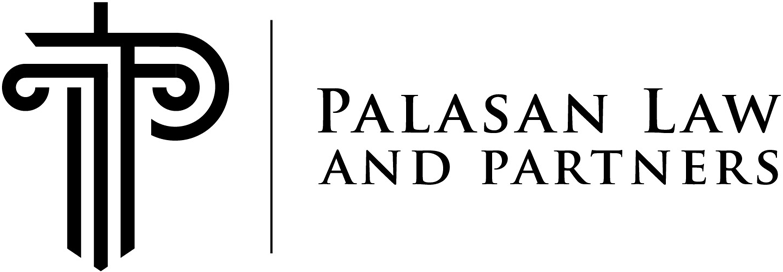Abandoning its previous ruling in the 1974 case of Aznar v. CTA, the Supreme Court has ruled that the extraordinary 10-year tax assessment period applies only to false tax returns that contain deliberate or willful misstatements.
Thus ruled the Supreme Court En Banc, in a Decision penned by Justice Henri Jean Paul B. Inting, granting the petition for review on certiorari filed by McDonald’s Philippines Realty Corporation (MPRC). The petition challenged the rulings of the Court of Tax Appeals (CTA) En Banc ordering MPRC to pay the amount of PhP9,206,213.06 in basic deficiency Value-Added Tax (VAT) for calendar year (CY) 2007, among others.
MPRC is a foreign corporation licensed to do business in the Philippines. It established a Philippine branch for purchasing and leasing back two existing restaurant sites to Golden Arches Development Corporation.
On September 15, 2010, the Bureau of Internal Revenue (BIR) issued a Preliminary Assessment Notice (PAN) finding MPRC liable for deficiency income tax, VAT and documentary stamp tax for CY 2007. MPRC responded to the PAN on February 23, 2011.
In the meantime, MPRC and the Commissioner of Internal Revenue (CIR) executed a Waiver of the Defense of Prescription under the Statute of Limitations on December 29, 2010 extending the assessment period to December 31, 2011. Another waiver was executed on December 27, 2011 extending the assessment period to March 31, 2012.
One day prior to the expiration of the second waiver, MPRC received a copy of a Formal Letter of Demand with attached Details of Discrepancies and Audit/Assessment Notice (FLD/FAN) from the CIR. The FLD/FAN stated that MPRC failed to subject to VAT gross receipts from interest/rental income amounting to PhP11,080,687.70.
After MPRC’s protest was denied by the CIR, MPRC elevated the case to the CTA.
The CTA Division held that the CIR’s right to assess had not yet prescribed as the tax returns filed by MPRC were false returns. The CTA Division was affirmed by the CTA En Banc, prompting MPRC to file the present petition.
In granting MPRC’s petition, the Court held that only intentional errors in the tax return may justify the application of the 10-year assessment period.
The Court first cited Section 203 of the National Internal Revenue Code of 1997 (1997 Tax Code) as the basis for the basic rule on the prescriptive period of assessments, which permits the CIR and his authorized representative a limited time of three years to conclude their investigation and issue a formal assessment based on the audit findings.
An exception, however, is in case of a false or fraudulent return or of non-filing of a return altogether, where the period of assessment may be extended up to 10 years from discovery, referred to as the extraordinary 10-year period of assessment.
The Court then reviewed existing jurisprudence on the application of the extraordinary 10-year assessment period, which consistently hold that tax authorities bear the burden of establishing, with clear and convincing proof, the existence of grounds warranting the application of the 10-year period.
The Court further noted that in the 1974 case of Aznar v. CTA, the Court, referring to the then 1939 Tax Code, introduced the concept of substantial underdeclaration as sufficient proof of falsity to justify the extension of the assessment period. This concept was later formally incorporated in the 1997 Tax Code, but the misstatement or misdeclaration, to be considered substantial, must exceed the corresponding amount declared in the return by 30%.
Thus, under the 1997 Tax Code, when the misstatement or misdeclaration identified by the CIR surpasses the 30% threshold, the return in question shall be regarded as prima facie false or fraudulent. In such cases, the CIR is relieved of its duty to establish falsity or fraud, with the burden of proof shifted to the taxpayer. More importantly, the prima facie false or fraudulent return serves as sufficient ground for applying the extraordinary 10-year period.
To comply with due process, the Court also held that the CIR must disclose the computation by which the tax authority ascertained that the misdeclaration in the return surpassed the 30% threshold, to afford the taxpayer an opportunity to refute the correctness or reasonableness of such computation.
The Court then declared that its ruling in Aznar v. CTA which applied the extraordinary 10-year assessment period to false returns in general, regardless of whether the deviation is intentional or not, is now abandoned.
Rather, consistent with Section 222(a) of the 1997 Tax Code, the extraordinary 10-year assessment period applies to a false return when: (1) the return contains an error or misstatement; and (2) such error or misstatement was deliberate or willful, all of which lie on the CIR to establish with clear and convincing evidence.
However, this burden shifts to the taxpayer when there is prima facie evidence of falsity or fraud under Section 248(B) of the 1997 Tax Code such as when (1) there is an understatement/underdeclaration of sales, receipts, or income or overstatement/overdeclaration of expenses or other deductions, and (2) the misstatement is substantial, such that it exceeds the corresponding amount declared in the return by 30%.
The Court further stressed that the assessment notice issued to the taxpayer must comply with two sets of due process requirements.
Under the first due process requirement, the notice must clearly state that (a) the extraordinary prescriptive period is being applied and (b) the bases for the allegations of falsity or fraud.
Under the second due process requirement, the tax authorities must not have acted in a manner that is inconsistent with the invocation of the extraordinary prescriptive period or have otherwise misled the taxpayer that the basic period will be applied.
Applying the foregoing to MPRC, the Court found there was no prima facie evidence of a false return since the misstatement did not meet the 30% threshold as required under Section 248(B) of the 1997 Tax Code. Hence, the burden is on the CIR to establish that MPRC filed a false return with intent to evade tax.
The Court, however, found no proof of such willful intent on the part of MPRC. “That a misstatement has been sizeable, cannot, on its own, be regarded as sufficient proof of an intention to evade tax,” held the Court.
“[O]nly intentional and deliberate errors may render the return false for purposes of invoking the extraordinary period under Section 222(a). Certainly, a return may contain errors. However, if the CIR fails to establish that the misstatement was willful on the part of the taxpayer, plain errors—such as that committed by MPRC but expressly recognized by the tax court as not arising from a deliberate attempt to evade tax—cannot justify the application of the 10-year period,” the Court said.
The Court further held that CIR violated MPRC’s due process rights for failing to inform MPRC on the justification for its application of the extraordinary 10-year assessment period.
Thus, as the CIR incorrectly applied the 10-year assessment period and given that the FLD/FAN was issued beyond the basic three-year period, the Court ruled that the VAT assessments have prescribed.
As assessments that have prescribed are void, the Court found it no longer necessary to discuss the correctness of the VAT assessment.
The assailed tax assessment against MPRC was thus ordered cancelled and set aside by the Court. (Courtesy of the Supreme Court Public Information Office)
Full text of G.R. No. 247737 (McDonald’s Philippines Realty Corporation v. Commissioner of Internal Revenue) at: https://sc.judiciary.gov.ph/247737-mcdonalds-philippines-realty-corporation-vs-commissioner-of-internal-revenue/
Full text of the Concurring Opinion of Associate Justice Alfredo Benjamin S. Caguioa at: https://sc.judiciary.gov.ph/247737-concurring-opinion-justice-alfredo-benjamin-s-caguioa/
Full text of the Concurring and Dissenting Opinion of Associate Justice Japar B. Dimaampao at: https://sc.judiciary.gov.ph/247737-concurring-and-dissenting-opinion-justice-japar-b-dimaampao/

